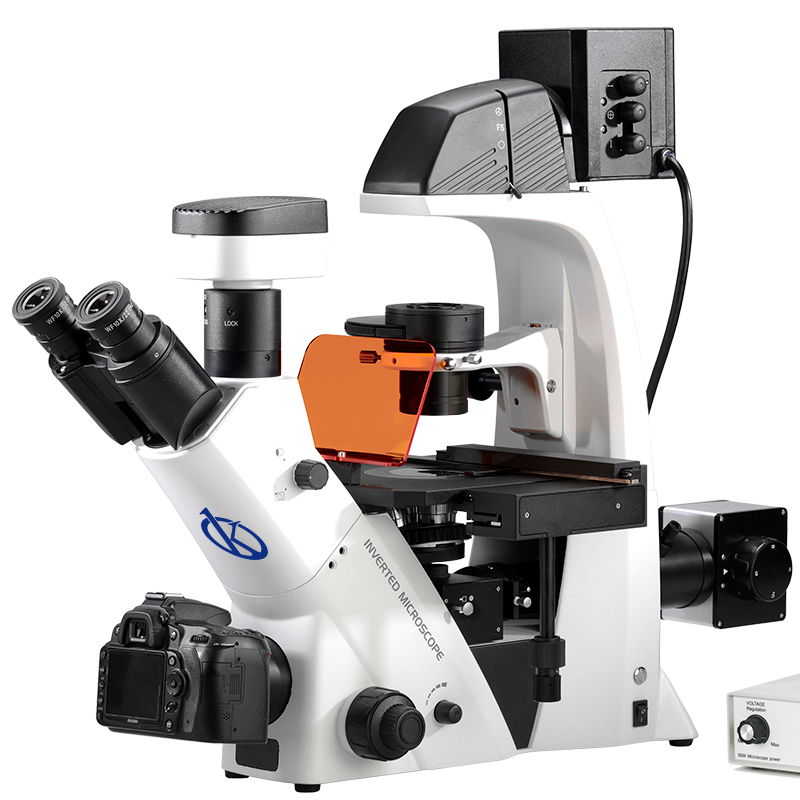The microscope is an instrument that allows to observe objects that are not perceptible to the human eye. This is achieved through an optical system composed of lenses, which form and amplify the image of the object being observed.
One of the great advances that the world of science had occurred with the arrival of the Optical Microscope. This invention was the starting point of a great variety of advances in the world of science, which started from the world of Microscopy and which also changed the way of seeing the world, from the possibility of studying Bacteria (which gave march to Bacteriology) until the analysis of our own blood with the discovery of Red and White Blood Cells, which was a strong advance in the world of medicine.
Story
The microscope was invented by Zacharias Janssen in the year 1590. In the year 1665 it appears in the work of William Harvey on the blood circulation when looking at the blood capillaries under the microscope, and Robert Hooke published his work Micrographia.
Some Types Of Optical Microscopes
- Two types of optical microscopes are distinguished, based on the number of lenses and their position. These are:
Simple microscope: commonly known as a magnifying glass. It is made up of a single lens, or a system of lenses that act as if it were a single lens. - Compound microscope: it is constituted by the combination of two or more convergent lens systems: one, close to the observer’s eye, the eyepiece and the other close to the object, called the objective.
The compound microscope consists of two parts, a mechanical part that has the purpose of holding the preparation to be examined and supporting the entire optical system of the microscope. And an optical part that considers the two converging lens systems centered on a common optical axis, called eyepiece and objective. This part also integrates a lighting system that facilitates microscopic observation.
What Are The Components Of A Composite Microscope?
- Foot: supports the rest of the microscope, it is made up of a heavy metal structure.
- Stage: is the structure that supports the preparation to be observed.
- Tube: the optical system is installed in it. Currently, binocular devices (two eyepieces) that facilitate vision with both eyes and revolvers are common, with which objectives can be changed instantly, without blurring the preparation.
- Objectives: They are inserted into the microscope nosepiece and two types are distinguished: Dry Objectives and Immersion Objectives.
- Eyepiece: Allows you to observe the image of the object formed by the objective, acting like a magnifying glass. It is composed of two lenses: the lower or collector, and the upper, or ocular lens.
- Lighting system: Located under the stage, it is made up of: Lamp or lighting mirror, Condenser, Diaphragm and Light filters.
What Recommendations Should Be Taken Into Account For Your Care?
The microscope is a valuable instrument. In order for it to serve effectively year after year, it needs proper care. For this reason, remember the following indications:
- Avoid moving the microscope when the lamp is on, as the filament of the incandescent lamp is extremely sensitive.
- To move it remotely, use the corresponding fixing screws.
- Do not touch the lenses of eyepieces and objectives with your fingers, to avoid staining them with their natural grease.
- Do not move your microscope or lenses.
- After using the microscope, clean it with a dust-free linen cloth or cotton wool. Check that they are not ready on the platen.
- Leave it with the lowest magnification lens, the stage as close as possible to it, and protected with the corresponding cover.
At Kalstein we provide you with microscopes that meet the highest demands, whatever the application, from routine clinical laboratory work to the investigation of multidimensional dynamic processes in living cells. That means our optical microscopes are designed knowing how important it is: superlative image quality, ergonomic handling, fast results, and cost effectiveness. That is why we invite you to take a look at our microscopes available HERE

